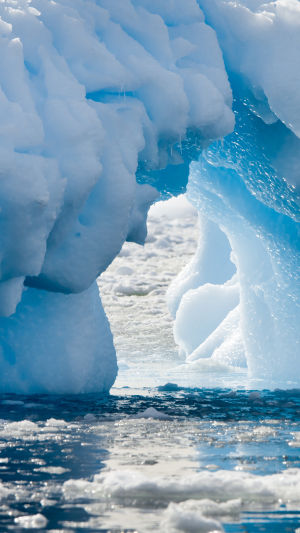Glaciers are natural ice bodies that exist on the surface of polar or alpine regions for extended periods and exhibit movement along the ground.
They are formed through the accumulation of snow over many years, undergoing processes such as compaction, recrystallization, and refreezing. Glaciers possess distinct shapes and levels, as well as the ability to flow under the force of gravity.
Considered among the most awe-inspiring natural features on Earth, glaciers are formed from snow and ice and are typically found in alpine or polar regions. These massive ice formations serve as crucial freshwater reservoirs, playing a vital role in the global climate and water cycle.
The formation of glaciers is a complex and time-consuming process that primarily occurs in alpine regions characterized by lower temperatures and abundant snowfall.
When snow accumulates to a significant extent, it becomes compressed and gradually transforms into ice, giving rise to glaciers. The formation of a glacier can span thousands of years, making it a gradual and remarkable phenomenon.
Glacier accumulation refers to the process of various forms of precipitation accumulating on glaciers. This accumulation includes the incorporation of ice and snow onto the glacier surface. The primary source of glacier accumulation is solid precipitation from the atmosphere, such as snowfall.
Additionally, avalanches, ice avalanches, and wind-blown snow contribute to the accumulation of snow and ice on glaciers, serving as important sources of glacier growth.
Glacier melting refers to the process by which glacial materials disperse due to the melting and evaporation of snow, granular snow, and glacier ice caused by rising temperatures. This process results in the flow of glacial meltwater out of the glacier body.
The development of glaciers occurs in high mountainous regions. Apart from requiring a specific altitude, these mountains should have slopes that are not excessively steep. Steep mountain peaks cause the falling snow to slide down the slopes, preventing the accumulation of snow necessary for glacier formation.
Furthermore, the formation of glaciers relies on several conditions:
1. Sufficient precipitation: Adequate precipitation is crucial for the accumulation of snow and subsequent glacier formation. In high mountain areas, the terrain obstructs moisture from the ocean, resulting in increased precipitation, which promotes glacier growth.
2.Snow accumulation: Snow accumulation is a fundamental aspect of glacier formation. As snow accumulates, the pressure from the overlying layers compresses the lower layers, transforming them into ice. Over time, the accumulated snow gradually turns into glaciers through the process of compaction and recrystallization.
3. Glaciers exhibit plasticity and flow under the force of gravity. The movement of glaciers is driven by the accumulation of more ice than melting. While glaciers generally move slowly, certain factors, such as the front of a glacier or the outlet of a glacial lake, can accelerate their movement.
The retreat of glaciers has become a common phenomenon as the global climate warms. Glacier retreat not only leads to a reduction in the extent of glacial areas but also has significant implications for water resources, ecosystems, and human societies.
The melting of glaciers releases substantial amounts of glacial meltwater, which impacts river runoff and water quality, while also affecting nearby ecosystems. Additionally, glacier retreat contributes to the rise in sea levels, posing a threat to low-lying areas and coastal cities.





